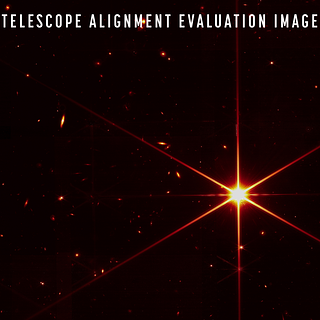
Copernical Team
Carrier rocket preparing for its debut flight
 Smart Dragon 3, a new model of solid-propellant carrier rocket, is scheduled to make its debut flight in September, according to a senior rocket scientist.
Engineers at the China Academy of Launch Vehicle Technology, the country's major rocket maker, are building the first Smart Dragon 3, which will be launched for the model's first mission, said Jiang Jie, a senior rocket scientist at the
Smart Dragon 3, a new model of solid-propellant carrier rocket, is scheduled to make its debut flight in September, according to a senior rocket scientist.
Engineers at the China Academy of Launch Vehicle Technology, the country's major rocket maker, are building the first Smart Dragon 3, which will be launched for the model's first mission, said Jiang Jie, a senior rocket scientist at the Developing design tools for outer space structures
 West Lafayette IN (SPX) Mar 17, 2022
Achieving affordable space exploration will require lightweight structures for vehicles, solar arrays and antennas. Lightweight materials also will be used for components of structures like pressurized habitats, cryogenic tanks, landing gears and truss cages.
The problem is that NASA envisions that many of those structures will be made from tailorable
West Lafayette IN (SPX) Mar 17, 2022
Achieving affordable space exploration will require lightweight structures for vehicles, solar arrays and antennas. Lightweight materials also will be used for components of structures like pressurized habitats, cryogenic tanks, landing gears and truss cages.
The problem is that NASA envisions that many of those structures will be made from tailorable India maps out plan to increase satellite launches
 The Indian National Space Promotion and Authorisation Centre (INSPACe) has started hiring people for top posts at the Indian Space Research Organisation (ISRO) to take on new space missions and increase the manufacturing and launch of satellites.
The Indian Space Research Organisation (ISRO) is all set to take its missions to another level with an increase in the number of satellite manufa
The Indian National Space Promotion and Authorisation Centre (INSPACe) has started hiring people for top posts at the Indian Space Research Organisation (ISRO) to take on new space missions and increase the manufacturing and launch of satellites.
The Indian Space Research Organisation (ISRO) is all set to take its missions to another level with an increase in the number of satellite manufa ISS crews prepare for flow of visitors, rotations over next month
 Crews on the International Space Station (ISS) will cope with almost unprecedented human congestion as 18 astronauts and cosmonauts arrive, work and depart from it over the next month, NASA ISS Operations Integration Manager Dina Contella said.
"[The] Soyuz launch on schedule on Friday [is] bringing three Russian crew members to the ISS and then returning [on March 30] with three ISS crew
Crews on the International Space Station (ISS) will cope with almost unprecedented human congestion as 18 astronauts and cosmonauts arrive, work and depart from it over the next month, NASA ISS Operations Integration Manager Dina Contella said.
"[The] Soyuz launch on schedule on Friday [is] bringing three Russian crew members to the ISS and then returning [on March 30] with three ISS crew NASA extends Ingenuity Helicopter Mission
 NASA has extended flight operations of the Ingenuity Mars Helicopter through September. In the months ahead, history's first aircraft to operate from the surface of another world will support the Perseverance rover's upcoming science campaign exploring the ancient river delta of Jezero Crater. Along the way, it will continue testing its own capabilities to support the design of future Mars air v
NASA has extended flight operations of the Ingenuity Mars Helicopter through September. In the months ahead, history's first aircraft to operate from the surface of another world will support the Perseverance rover's upcoming science campaign exploring the ancient river delta of Jezero Crater. Along the way, it will continue testing its own capabilities to support the design of future Mars air v 'Visionary' US astrophysicist Eugene Parker dead at 94

Eugene Parker, a pioneering American astrophysicist whose mathematical prediction that charged particles streamed from stars in a solar wind was met with disbelief before he was ultimately vindicated, has died aged 94, NASA said on Wednesday.
Parker was hailed as a visionary who laid the groundwork for the field of heliophysics, the science of understanding the Sun and its interactions with Earth and the solar system, including space weather.
In 2018, he became the first person to witness the launch of a spacecraft bearing his name, NASA's Parker Solar Probe.
NASA adds giant new dish to communicate with deep space missions

There's a powerful new member of NASA's family of giant antennas that enable engineers and scientists on Earth to communicate with the growing number of spacecraft exploring our solar system.
Called Deep Space Station 53, or DSS-53, the 111-foot (34-meter) antenna is part of NASA's Deep Space Network (DSN).
Space telescope's image of star gets photobombed by galaxies

NASA Mourns Passing of Visionary Heliophysicist Eugene Parker
 Dr. Eugene N. Parker, visionary of heliophysics and namesake of NASA’s Parker Solar Probe, has passed away. He was 94.
Dr. Eugene N. Parker, visionary of heliophysics and namesake of NASA’s Parker Solar Probe, has passed away. He was 94. El telescopio Webb de la NASA alcanza un hito en su alineación
 El telescopio Webb de la NASA alcanza un hito en su alineación
El telescopio Webb de la NASA alcanza un hito en su alineación 
